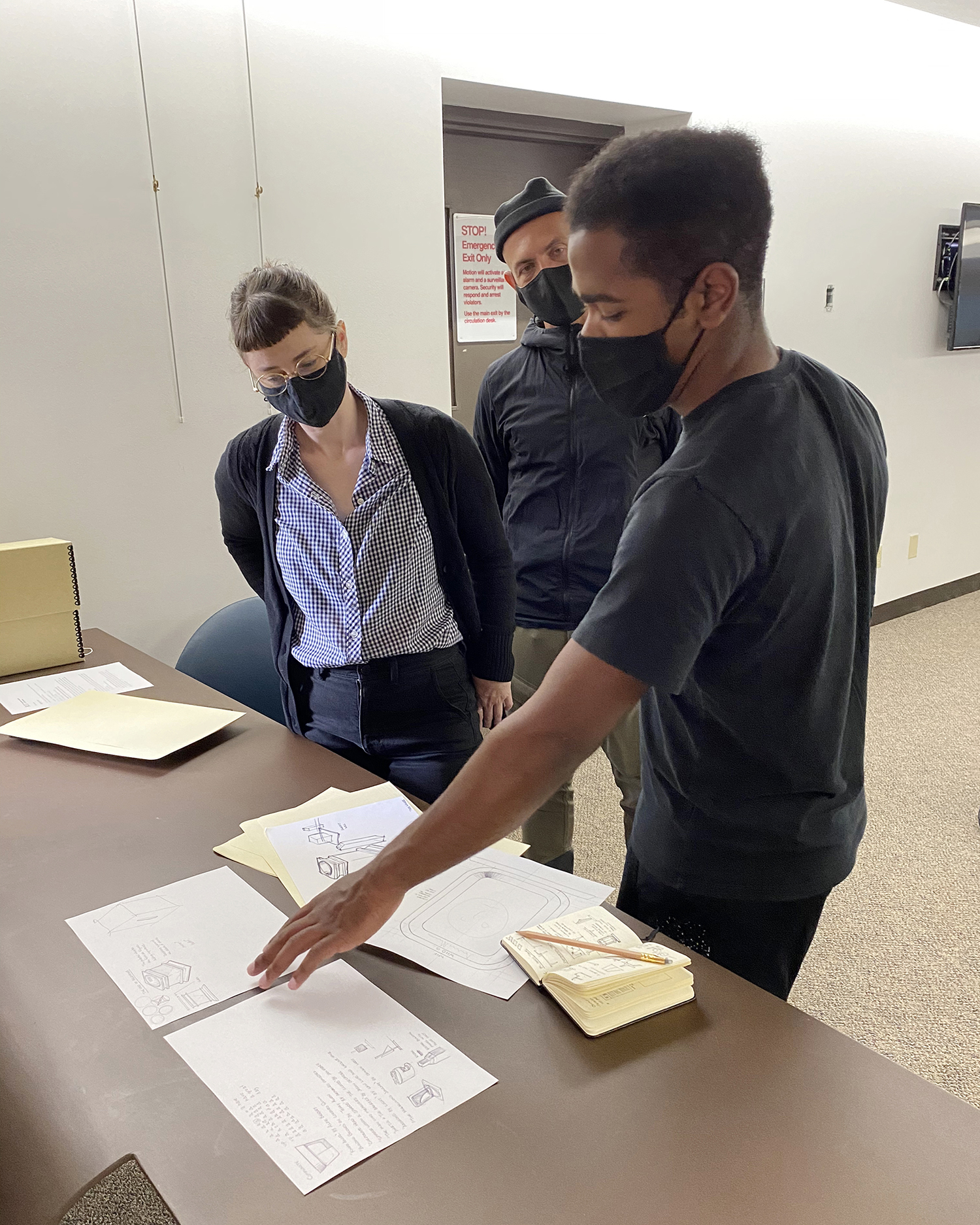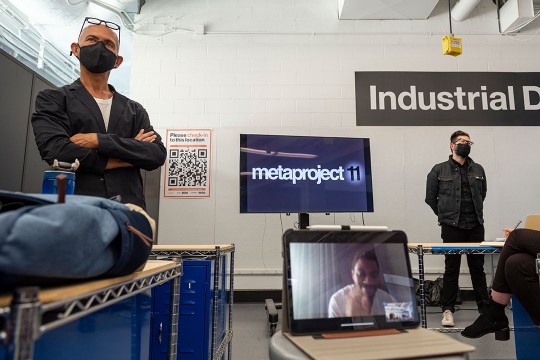Student design added to RIT Archives
Tiree Walker '21, left, shows his process work for the design of "The New Statue" to RIT Assistant Archivist Ella von Holtum, right, and Vignelli Center for Design Studies Director Josh Owen. The materials were selected for inclusion in the RIT Archives.
A student design that empowers community members to identify appropriate statues to build is being preserved as a valuable artifact of RIT history.
Tiree Walker ’21 (Industrial Design) devised “The New Statue” — a thoughtfully designed pedestal that collects community suggestions that drive informed decisions on monument construction — for the collaborative Metaproject course. The industry partner for Metaproject 11 was Staach, a local firm owned by Seth Eshelman ’06 (Industrial Design) that focuses on sustainable design.
Walker’s documentation of his design process was selected for inclusion in the RIT Archives. It continued an annual tradition of one Metaproject student’s process work being added to the archives to teach and inspire future generations.
On June 15, Walker donated “The New Statue” sketches as well as a 3D-printed model of the pedestal to the archives. The materials will be accessible by students, faculty, staff and other researchers moving forward.
“It’s an honor to be able to go through this process,” said Walker, from Cleveland, Ohio. “It gives me more insight into how projects, ideas and content is preserved.”
Walker’s project is in response to recent statues of historical figures tied to systemic racism and oppression being torn down across the U.S. His design takes a measured approach in ensuring future monuments encourage equity and inclusion.
Tiree Walker donated his process materials to the RIT Archives on June 15.
The concept is for the pedestal — fashioned with an open slot for submitted feedback — to temporarily reside at a proposed statue location site. The community is then invited to develop a feel for the public space and provide feedback on suitable legacies to honor with a monument.
“The project is centered on learning about the perceptions of people and statues that play a significant role in the community,” Walker said. “It’s about trying to provoke questions to cause people to dive deeper into a subject matter they might only have a surface-level opinion about, and develop an understanding of its importance or significance.
“By having a pedestal, it elevates the ideas they have and the people being represented.”
All of this year’s Metaproject students were tasked with designing educational objects that demand justice, empathy, sustainability, equity and inclusion.
Walker initially explored wayfinding design that highlights parts of the City of Rochester. His creative path changed when local artist and activist Shawn Dunwoody spoke to the class about ways he engages the community through public art.
“I realized I shouldn’t be telling the community what they should know or how they should think about something,” Walker said. “They should be telling us how they feel about something.”
Ella von Holtum is RIT’s assistant archivist who collaborates with Metaproject founder and Vignelli Center for Design Studies Director Josh Owen on choosing a Metaproject designer’s process work to add to the robust RIT Archives. She emphasized the value sketches and other tangible materials of the early design stages have in collections and archives.
“Process work gives us this window into the way creative people’s brains worked through a problem,” von Holtum said. “Anybody who is working on something creative — whether that is engineering or writing or painting or video game design — can find something inspiring in the process of other people and watching an idea or a solution take shape. Even if it doesn’t open a door to solving a problem of your own, it humanizes the experience of creation.”
Walker and the rest of his classmates are scheduled to formally unveil their Metaproject 11 work during New York City Design Week this November. Join the Vignelli Center mailing list to receive updates as they become available.







